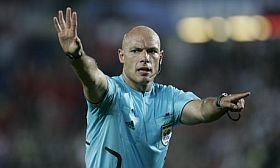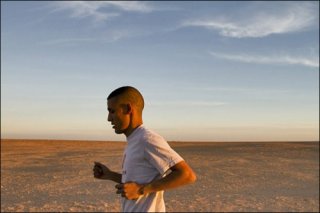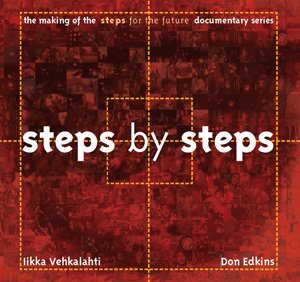Kirje 1:
Mikhail Litvyakov is the director of the festival in beautiful St. Petersburg. He has passed the seven decades of age but there was no sign of lack of energy when he was on stage to welcome guests and audience in the Dom Kino, to the 20th edition of a festival that includes an international competition, a national competition plus several side programmes. He and the president of the festival, film director Alexey Uchitel, and the rest of us, were pleasantly suffering the heat of St Petersburg when the opening ceremony took place ending with an honorary prize of the festival given to Agnès Varda, who was there to introduce her fine last film, ”Les Plages d’Agnès”, a film with many layers, young in spirit, and also a fine piece of film history presenting clips from her own films such as ”Cléo from 5 to 7” and ”Le bonheur” with constant references to the love of her life, late Jacques Demy.
I am here to chair the international jury for a programme that includes documentaries, animation and short fiction – and to hold a small project development seminar with Ludmila Nazaruk from DoxPro, a continuation of the November 2009 meeting that has been reported on this site.
www.miradox.ru
www.m2m.iffc.ru
Kirje 2:
Don’t say that films are not being made... the selection committee of the festival watched 2853 films from 83 countries. 73 were selected for the international competition (documentaries, animation, short fiction) and 24 for the National Documentary Competition, ”Gateway to Russia”. Looking back at the Grand Prix list of the festival’s 20 years one finds new classics like ”The Belovs” of Viktor Kossakovsky (in 1993) and ”Bread Day” of Sergey Dvortsevoy (in 1998).
The documentary profile of the festival is definitely social as readers of this site will be able to know by reading about ”Victor” (photo) by Andris Gauja from Latvia and ”17 August” by Alexander Gutman from Russia. Finnish director Jukka Kärkkainen introduces his favourite character Tero (the main protagonist in his masterpiece ”The Living Room of a Nation”, reviewed and noticed several times on this site) in ”Do you still remember Hilma Limperi”, and Bulgarian international producer Martichka Bozhilova presented the impressive ”Paradise Hotel” about a gypsy residential area that in socialist times was meant to be ”a paradise”, which it is absolutely not nowadays.
No complaints, watching films is a privilige, 3 two hour programmes per day, that is how it goes in a sauna-like hot hall that yesterday night (saturday) had a good audience, whereas earlier screenings had a limited attendance.
www.m2m.iffc.ru
Kirje 3:
... but there has been time to visit the Hermitage museum and fight one’s way to study the great collection of Rembrandt works (oh, documentarians, go and study how he caught the magical moments when he did his portraits) and the two ”Madonna with Child” by Leonardo da Vinci – as well as an exhibition of Picasso set up due to the French-Russian cultural year.
I write ”fight one’s way” as the Hermitage – apart from being one of the most wonderful art museums in the world – also is a battlefield where tourist groups from all over, led by sometimes very loud-speaking militant guides, who want their group to have the best views. And the best place to take photographs. Why is it not possible to see, just see, without gazing through a camera?
Film-wise the visit made me want to re-view Alexander Sokurov`s ”Russian Ark” (photo), a one-shot feature length film interpreting the museum magnificently, made to celebrate the 300 years of St. Petersburg. I remember the head-shaking commissioning editors when the film was pitched at the idfa forum. Not possible, and why a one shot, they said, led by BBC's Nick Fraser - they were very much wrong the rating hunting tv executives. The film is available through many dvd outlets.
www.m2m.iffc.ru
Kirje 4: ( Dokumenttiprpojektin osatuottamasta Aleksander Gutmanin elokuvasta.
The international competition included yesterday the film ”17th of August” by Alexander Gutman, reviewed and commented several times in this site. Here is a reprint of the review:
This fine Russian director has, apart from the masterpiece ”Frescoes” from Armenia, made a couple of very strong documentaries shot in prisons, ”Three Days and Never Again” and ”Blatnoi Mir” (directed by Finnish Jouni Hiltunen, Gutman was production manager), and here comes another that I do not hesitate to call masterly done as well.
One day in the life of a prisoner, sentenced to lifetime for murders, a man in a small cell, watched through the small window in the dark cell door, walking from one end to the other, exercising, making a cup of tea, praying with his head towards an icon of the bleading Jesus hanging on the wall, getting some food... and a small walk to a strongly fenced and guarded courtyard, filmed from above to achieve the impression of a man in a cage, A close-up study that works because of the brilliant combination of pictures with the monologue of the prisoner. On Life, on the conditions in the isolated prison, on being alone and away from it all, on being close to guards who are there all the time and in a way sharing his destiny.
Sometimes with some shots from the courtyard outside. A horse stands there, an old man comes and makes it ready for transport, they leave the prison, and the camera stays – later on they come back with a coffin to pick up the corpse that we have seen in a previous scene. Or a window with a cat. Did I say that it was black and white. And slow. And extremely well edited. Not a moment too much. Sympathy for the murderer? No, not really, but respect for a human being, curiosity.
Kirje 5:
An almost two year old boy running around observing what goes on. And touching the Golden Centaur statuettes lined up to be given to the winners. A conferencier shouting Russian words into the microphone trying to make a festive atmosphere. Next to him a very professional female interpreter who repeat in English. One after one the winners are called to the stage... but not many of them are present. The atmosphere is supposed to be lifted by loud music that is generally tough for the ears. Nothing is really planned in details and people are sweating during the hour it takes before departure to the farewell reception.
A nice atmosphere, some would say chaotic, my fellow jury friend said ”excuse me my French, but this is a complete disaster”, I would call it anarchistic – and yet, politics are being made, the director of the main private sponsor, a Dutch company, is called to receive a medal as was he a filmmaker, and the board of directors give special prizes for filmmakers, who were not on the lists of the juries...
And outside my travel partner and I look at the young women, who fight to walk the high heels, that they all have. If you don’t wear them, you are not a real woman, one of our young smiling guides told us her mother had said. Photo from "Paris Return", winner of Message2Man category Best Documentary, see below.
www.m2m.iffc.ru
Tilføjet i kategorierne: Festival, Articles/Reviews ENGLISH0 bemærkninger
Kirje 6:
The 20th edition of the St. Petersburg International Film Festival ended with an award ceremony yesterday night in the Dom Kino. There were a large number of prizes to be given, I will limit this posting to include those in the documentary categories.
The prize for the best long documentary (US$ 2000) was given to the director Yossi Aviran from Israel for the multilayered description of the reflections and lives of an Israeli and an Italian man living together for three decades in Paris. The Israeli man doubts whether to go back to Israel for the rest of his life, the Italian, a bit younger, is the constant optimist, and enjoyer of life. A beautiful film about life and death coming nearer, title ”Paris Return”. The short documentary prize (US$ 2000) was given to the Slovak documentary, ”Arsy versy” (photo), by Miro Remo, original and fresh in its approach to the theme of mother and son, the latter being obsessed with bats. It has rythm and passion.
The Grand Prix (US$ 5000), the jury (that I was chairing) had chosen was ”Draft” by Timofey Zhalnin, young Russian director, who had managed to make a light and yet deep film about the drama of a woman who is recording herself on camera in order to compete for a role in a theatre play. She is, however, constantly being disturbed by the ”intrusion” of reality – family, friends in the small appartment. Documentary and fiction.
The national competition for short documentaries decided not to give a first prize for quality reasons, and the critics chose ”David Wants to Fly” by David Sieveking.
www.m2m.iffc.ru
Tilføjet i kategorierne: Festival, Articles/Reviews ENGLISH0 bemærkninger
Torkil Funder: Tiden i Ribe
Skrevet den 21-07-2010 11:22:48 af Allan Berg Nielsen
Det her er en udstilling, som blandt dokumentarister og dokumentarfilm-interesserede må gøre indtryk, som den gør i museumskredse, hvor Torkil Funder er berømt. Hans museumsudstillinger er minderige: Middelalderen i Ribe, 1972, Nybyggerne ved Gal Oya floden, 1974. Middelalderen i Randers, 1976, Rejse i Oman, 1977, hvor han for alvor brød igennem med sin særlige udstillings-essayistik. Ingen, der så den udstilling, glemte den igen. Senere kom blandt andre Skolen i Ribe, 1995 og nyere tids udstillings-afsnittet på museet i Aars i 1999.
Sideløbende med udstillingerne udviklede Torkil Funder på hundredvis af møder, kurser og i sin daglige undervisning lysbilledforedraget til en kunstform, et personligt essay, som han selv kalder fortælling. Hans fotografi er nøgternt og følsomt, aldrig søgt, aldrig sentimentalt, men næsten altid vemodigt som også udstillingernes tone, som foredragenes og udstillingsteksternes grundstemning.
Med lysbilledforedragene er Funder tæt på dokumentarfilmen, og nu med udstillingen Tiden i Ribe, som er én lang række juxtapositioner af fotografier og tekster, har han på en måde lavet en film på væggen i biblioteket i Esbjerg. En film i lille format, men af overvældende indhold i den store biografisk-topografiske tradition som (ja, sådan ser jeg den) i filmens verden Ruttmann med Berlin, Kestner med København og i bøgernes verden, Seeberg med Viborg, Magris med Trieste, Pamukmed Istanbul. Jeg er meget bevidst om de navne, det er i den række, Funders arbejde for mig at se hører hjemme, der, hans fortælling om byen ved åen og dens tid og hans egen tid med den by har sin plads.
Foto: Ribe Å ved Petersholm, januar 2001.
Læs mere / Read more
Tilføjet i kategorierne: Artikler DANSK, Poetics0 bemærkninger
Golden Apricot Awards
Skrevet den 20-07-2010 10:35:28 af Tue Steen Müller
The Golden Apricot film festival in Yerevan in Armenia (July 11-18) ended as a triumph for Russian director Pavel Kostomarov, whose fine film ”Together” (reviewed on this site) got the first prize, the Golden Apricot, for the Best Documentary Film in the international section
In the Armenian Panorama Competition the Golden Apricot was given to, as the best Armenian film, was given to ”The Last Tightrope Dancer” by Arman Yeritsyan and Inna Sahakyan, also reviewed and commented upon on this site.
Special prize in the feature film competition was given to the first feature film by well known documentarian Sergey Loznitsa, ”My Joy”.
http://www.gaiff.am/en/
Tilføjet i kategorierne: Festival, Articles/Reviews ENGLISH0 bemærkninger
Message2Man/4
Skrevet den 20-07-2010 07:18:33 af Tue Steen Müller
Tilføjet i kategorierne: Festival, Reviews, Articles/Reviews ENGLISH0 bemærkninger
Message2Man/3
Skrevet den 18-07-2010 06:31:25 af Tue Steen Müller




